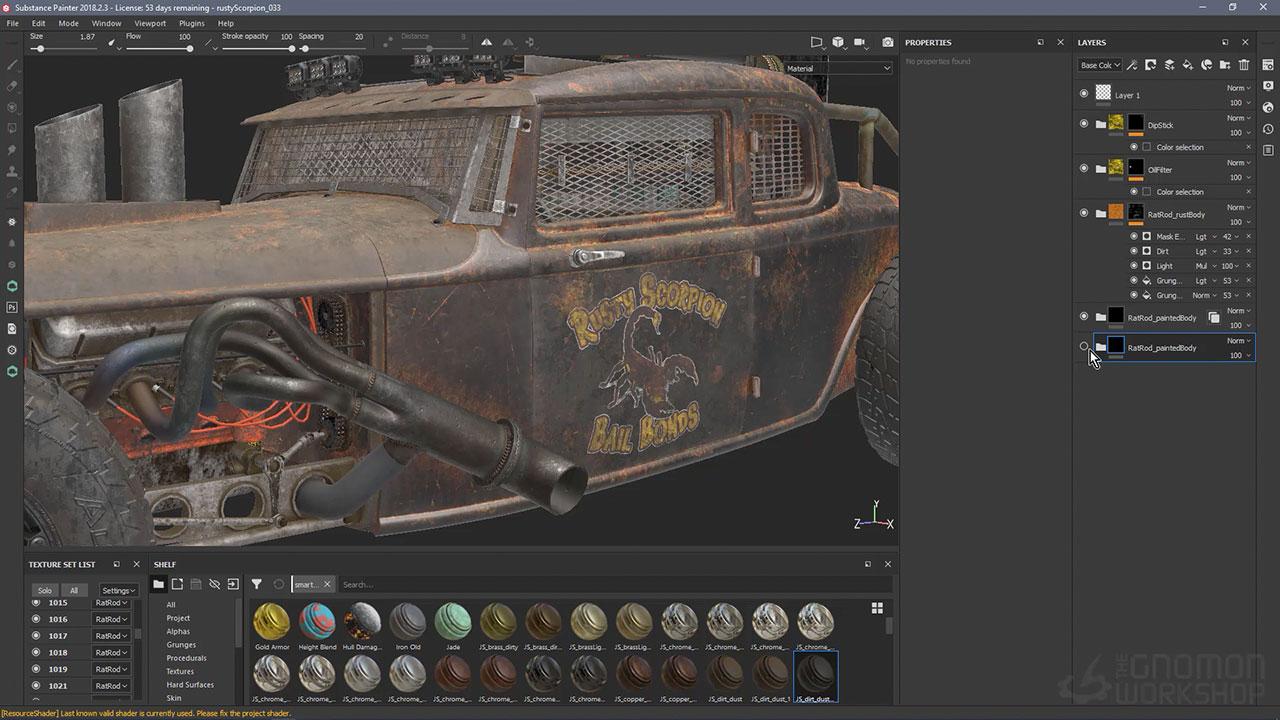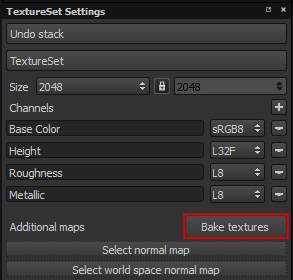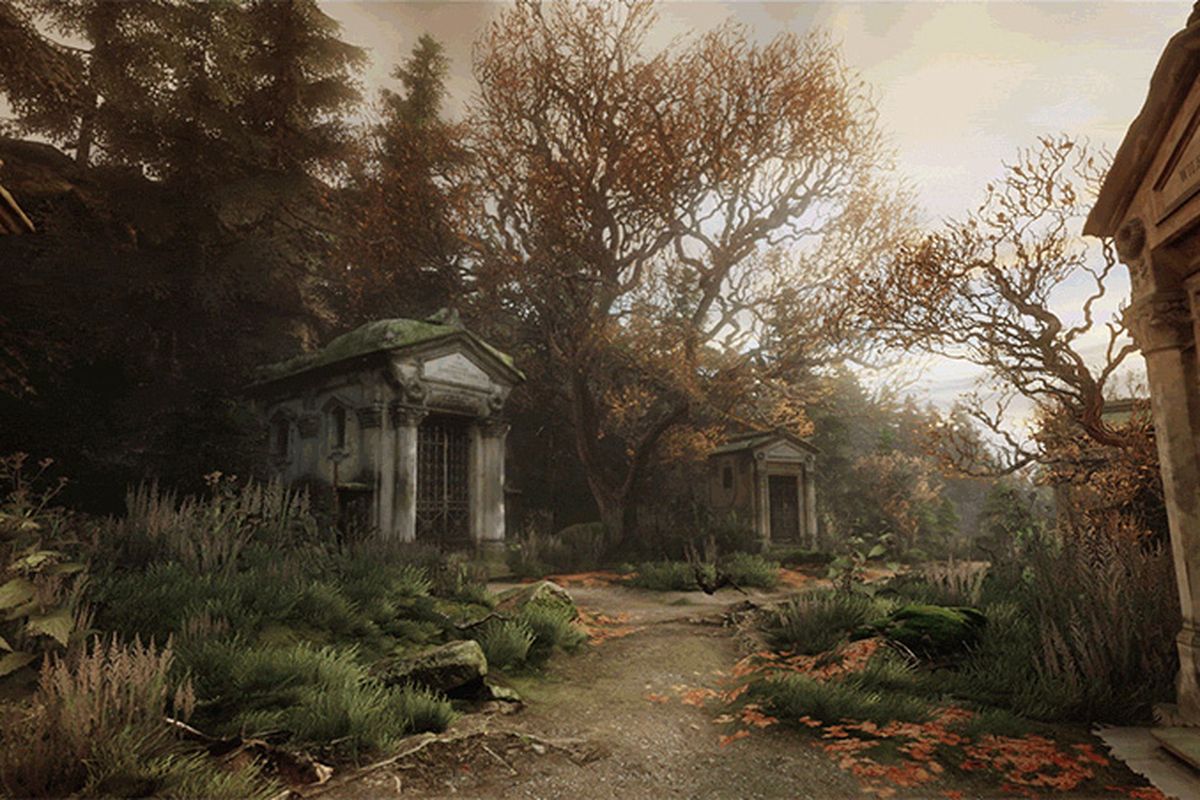How have PBR Applications Reshaped an Artist’s Pipeline?
| ✅ Paper Type: Free Essay | ✅ Subject: Photography |
| ✅ Wordcount: 3221 words | ✅ Published: 18 May 2020 |
Through technological innovation how have PBR Applications reshaped an Artist’s Pipeline?
Abstract.
This report will look at and discuss how technological advancements have revolutionized texturing methods and how 3D artists have had to adapt their workflow to suit the changing industry. I will explore the programmes, methods and techniques that have had the biggest impact on the industry, these include Quixel Suite, Substance Painter/ Designer, Unreal Engine and Photogrammetry. I will investigate the main features and applications within this field. My argument is supported through extensive research, data collection and studies which go into great depth about what features make PBR such a game changer. Within this report I will also include comparisons between traditional and next gen pineplines and how because of advancements assets can be created for a much lower cost and at a much higher speed.
Introduction.
The video games industry has been growing rapidly since the birth of the interactive media and with huge technological advancements within the industry the way in which they are created is ever changing, because of this, 3D artists must adapt and reshape their workflows to match that of what is required. In this report I will conduct an in-depth analysis on the practical use and application of physically based rendering and highlight key areas to showcase what is on offer and why it is so dominant within the industry.
Key Programme Features
I will be investigating key features from Substance Painter that have been the most influential and effective in changing an artists workflow and Industry standards.

This is a programme that I use myself and through observation during my time at university it is a staple for the majority of artists I have worked alongside. The programme itself is constantly changing and adapting features to not only increase the visual standard of its textures but also dramatically decrease the time it takes to complete each task.
Substance Painter Texture Available at : URL
Smart materials are a well known feature within substance and are a collection of layers similar to that of Photoshop but allow you to have much greater control whilst manipulating layers by being able to see it applied to your 3D asset in real time. Smart materials can be combined in the layering system with additional materials and masks to create much more intricate designs at a fraction of time. There are also deeper levels of modification within the materials themselves where you can edit values attaining to each individual map ( Normal, Spec, Emissive etc) as well as being able to paint materials within specific areas ( Edge wear, Rust, Crevice dirt etc), this gives the artist a huge advantage in being able to make an asset that is more visually powerful. In comparison, texturing with Photoshop would require high amounts of research and preparation including spending a much higher volume of time perfecting UV layouts in order to correctly paint wear, dust and dirt within appropriate areas.There is also a large amount of time consumed in applying your texture from photoshop to your asset for reference that is completely nullified by Substance’s ability to view your textures in either 3D or 2D so you can instantly see progress. 

Smart Materials Available at : URL
Baking Available at : URL
Another Key feature from Substance painter is an integrated renderer called Iray that renders assets to a very high quality with options to adjust lighting, higher sampling (Quality) and environmental aspects. This makes it much easier for an artist to create renders for their portfolio or even work in-progress snapshots to share with your colleagues or team members as they can be exported directly from substance painter.
Baking in substance is done through its integrated GPU baker where it creates the required maps from the information gathered from the high poly asset. Baking is a process that is extremely effective within substance as dirt masks and weathering use this data to apply themselves accordingly to your asset. Being able to view your asset, textured in real-time you can adjust these sliders to suit your preference. This saves the artist a large amount of time being able to create multiple iterations and texture sets of an asset by simply hiding a layer and re exporting.
Substance painter gives you a huge amount of options in how to export your maps, this is something that is especially helpful when working in Unreal engine which works with combined AO, Roughness and metallic maps. What seem like simple features all aid in speeding up the process, using photoshop it would be much more difficult to obtain these maps, using either filters or separate programmes such as NDO which all consume more time.
Photogrammetry
Photogrammetry it appears is becoming a staple in the video games industry by using real world scans to create assets. This method is being used more and more by artists within the industry to create big titles, Star Wars : Battlefront , The Division 2 and The Vanishing of Ethan carter are just an example of a few.
There is a specific pipeline you must follow in order to create an asset through photogrammetry but the results are extremely impressive, leaving you with a realistic much more believable scene. An article summarizes that the cost of an individual standard Raspberry PI photogrammetry setup would total over twelve thousand Australian dollars, this would seem like a large amount of money but the article goes on to state that due to how much quicker photogrammetry is compared to older techniques that the amount of money you save from development suite subscriptions and living costs means that the studio actually saves money.

Statue Photogrammetry Available at : URL
To break that down further, using photogrammetry takes around 50% less time to complete each asset and leads to a much higher visual standard, it is completely cost effective and with additional time now created more effort can be directed towards immersive storylines and other aspects of the game.
Use in Industry
The industry is at the forefront of using these techniques and programmes and because of this developers have improved their functionality and added new features upon request, this has meant that they are constantly maintaining a high standard and meeting the demands of the industry’s progression. With having a close connection to both industry professionals and the public these companies are highly responsive to feedback and implement new features regularly which you can check by viewing their roadmaps.
Another benefit from having close ties is that certain companies build up huge libraries of materials with even the public using substance share to compile private libraries of their own. This is something that again lowers production time and costs by having access to thousands of materials from anywhere at any time that could be used on multiple projects within the same company.
Allegorithmic and Quixel are a necessity to the majority of both AAA and Indie games created today. Quixel have worked closely with epic games for a number of years but more recently collaborated to showcase Megascans Icelandic Library with a short video : Rebirth, this really shows how immersive and realistic an environment can be with the aid of Qixels Photogrammetric library.
Rebirth : Megascans Icelandic Library. Available at : URL
A large portion of the biggest titles released such as Dead By Daylight, Ghost Recon : Wildlands and Shadow Of The Tomb Raider were textured using Substance painter/Designer. The senior technical artist at Eidos, Ken Jiang described how important Allegorithmic programmes are within the industry. “Substance is now one of the essential software tools of our art pipeline. It’s helpful because it cuts down our texturing time estimates dramatically. Its non-destructive nature makes it risk-free to iterate and optimize the final results.” (Jiang, 2018).
Both Allegorithmic and Quixel are constantly increasing the visual benchmark of games and trying to attain new heights in photo-realism. To reach these requirements visually the hardware powering the games has had to also increase to match, these programmes can both work and export in 8K textures but remain experimental features whilst the hardware needed becomes more commonplace.

Substance character texture. Available at : URL
Traditional Workflow Comparison
Traditional workflows require much more time and effort spent in areas that now because of advancements require very little and give much better results. During my own development through University I found my workflow constantly changing to match that of new advancements and looking back I can see how these features have streamlined my own process. Older pipelines required repetitive iterations of every asset that would need to routinely checked to see if colours were matching and suitable, this would get tedious having
to go between programmes and PBR Validate. Available at : URL
re -import almost constantly. This is something that Substance has
tackled with the PBR validate feature which checks whether RGB values
for certain maps are physically correct with how they act in reality. It does this by testing whether they are suitably within a specific range and mark areas too dark in red on the mesh in the window.
The Vanishing of Ethan Carter is a great example of how a traditional workflow has changed through the use of photogrammetry. Using Photoscan from Agisoft the Art team were able to create large environments that had been scanned from real world locations. By using this method it created highly realistic environments that had many intricate layers and a real sense of depth. This is something that is extremely hard to replicate by using a traditional pipeline, the scanned environments are very high quality and contain erosion, cracks and stains that have taken hundreds of years to develop into what we have in the real world. An artist using an old workflow would couldn’t even attempt to replicate the intricacy involved especially with the small timeframe they are designated during each assignment.
The Vanishing of Ethan Carter. Available at : URL 
Being able to scan entire environments with programmes like Photoscan means that large portions of assets and environment locations can now be completed without using a traditional pipeline whatsoever and it has become a new pipeline within itself.
Historic centerpieces and statues can now be photographed and scanned into a game in great detail and for this type of asset creation a traditional workflow is completely changed, from spending hours in programmes like Maya you now spend hours setting up cameras in unusual and interesting locations around the world. One important thing to note is that regardless of the advancements in scanning real world locations the traditional pipeline is still of much use, for
creating assets that do not exist in the real world and there is a large demand for that in the market.
Photogrammetric building. Available at : URL
Conclusion
To conclude, it is evident that programmes like Substance painter / designer and Quixel suite have had a huge positive impact on artists pipelines and substantially reshaped their workflow. For me the most important reason for this is these programmes allow an artist to create an asset that is visually appealing whilst maintaining real world values pertaining to each material. Having the ability to bake high levels of detail into low poly meshes and then adding further detailing through the use of smart masks with scratches and dirt etc, radically reduces the time I would have had to take adding all these details in individually. Being able to work effortlessly covering multiple aspects of asset production within one programme has revolutionised the ease of creating high quality assets. Having a real time viewport and near endless material sliders changing base colour, Crack intensity, Roughness etc means you can accomplish so much in such a short space of time.
Tileable textures through the use Quixel mean that entire procedurally generated maps can be quickly textured and blended to provide a realistic flooring in incredibly quick time, any small tweaks can be added via decals or vertex painting within engine during set dressing. This is a process that was almost unthinkable during previous gaming eras where flooring was usually low resolution near base colour blocks. Even in the more recent past flooring lacked depth through lack of normal mapping and only recently became a staple of AAA games.
It is becoming near impossible to find developers within the game industry that dont use a form of Allegorithmic or Quixel within their production and it is because of this that consumers are seeing a huge improvement in graphics for the next gen games at levels we’ve never seen before.
The old pipeline of using photoshop to create textures has become outdated due to the sheer versatility and convenience of programmes like substance, being able to combine so many libraries of materials, being able to edit each of their own specific values and on top of that apply whatever variation of smart masks your creativity knows no bounds.
Photogrammetry in 2019 is really starting to make more of an impact on the industry as the workflow has began to tweak where needed and refine problem areas. Many developers are using photogrammetry in combination with more traditional techniques, this is by using photogrammetry on more complex assets that exist in the real world where an artist would spend many days or week modelling it can be completed at a fraction of that. Now we are also seeing the scale of what is possible to 3D scan increase to that of small scale environments and the results are very impressive. At our current stage we can scan replica waterfalls, graveyards and buildings, I can only see the level of what it possible increasing.
The games industry is constantly evolving and the visual benchmark is always getting higher, it is programmes like Substance and Quixel that will have to constantly add new features and expand their functionality to stay at the cutting edge. Even during my 4 years at university I have seen a dramatic change in my workflow as an artist and had to adapt to new ways of producing industry standard assets. It’s going to be interesting to see what advancements these programmes make over the coming years.
References
- Substance painter texture. [Online] Available at : https://www.google.com/url?sa=i&source=images&cd=&ved=2ahUKEwjny6bjnKTjAhWxxIUKHV4oDY4QjRx6BAgBEAU&url=https%3A%2F%2Fwww.thegnomonworkshop.com%2Ftutorials%2Fvehicle-texturing-in-substance-painter-from-clean-to-mean&psig=AOvVaw3dAKs_pAbbSqn536v6eTrg&ust=1562637533989163 [Accessed 8th July 2019]
- Smart Materials. [Online] Available at : https://www.google.com/url?sa=i&source=images&cd=&ved=2ahUKEwjBhI7LnqTjAhXOxoUKHWsFDZ4QjRx6BAgBEAU&url=https%3A%2F%2Fwww.artstation.com%2Fartwork%2FeDrlX&psig=AOvVaw0rORq4iwoBdTX1pMWdqeff&ust=1562638071360617 [Accessed 6th July 2019]
- Baking. [Online] Available at : https://www.google.com/url?sa=i&source=images&cd=&cad=rja&uact=8&ved=2ahUKEwing_6fn6TjAhXCxIUKHWeUADcQjRx6BAgBEAU&url=%2Furl%3Fsa%3Di%26source%3Dimages%26cd%3D%26ved%3D%26url%3Dhttps%253A%252F%252Fsupport.allegorithmic.com%252Fdocumentation%252Fspdoc%252Fbaking-109608997.html%26psig%3DAOvVaw11EyE3wfbH0RlB_8vI5XeL%26ust%3D1562638248225144&psig=AOvVaw11EyE3wfbH0RlB_8vI5XeL&ust=1562638248225144 [Accessed 6th July 2019]
- Rebirth : megascans Icelandic Library. [Online] Available at: https://www.artstation.com/artwork/w8NYgO [Accessed 7th July 2019]
- Substance Character texture. [Online] Available at :https://www.google.com/url?sa=i&source=images&cd=&ved=2ahUKEwjLzLnHoqTjAhVDRBoKHffAAOkQjRx6BAgBEAU&url=https%3A%2F%2Ftathastu.global%2Fallegorithmic%2Fsubstance-painter%2F&psig=AOvVaw2t2jgvdCp_Livf5H0b7Imc&ust=1562639124334857 [Accessed 6th July 2019]
- PBR Validate. [Online] Available at :https://www.google.com/url?sa=i&source=images&cd=&ved=2ahUKEwid19PQo6TjAhVDzRoKHbi-CLcQjRx6BAgBEAU&url=https%3A%2F%2Fsupport.allegorithmic.com%2Fdocumentation%2Fsddoc%2Fpbr-basecolor-metallic-validate-159451051.html&psig=AOvVaw1KLj50Vyc9lk3lVrvOQG_S&ust=1562639421136474 [Accessed 9th July 2019]
- The Vanishing of Ethan carter. [Online] Available at : https://www.google.com/url?sa=i&source=images&cd=&ved=2ahUKEwj27Yf5p6TjAhUk2uAKHeQ3AlwQjRx6BAgBEAU&url=https%3A%2F%2Fwww.polygon.com%2F2013%2F12%2F17%2F5219944%2Fthe-vanishing-of-ethan-carter-footage-moving-images-photogrammetry&psig=AOvVaw0VI_ycW3fg0Vu5DLP2eGjU&ust=1562640580534206 [Accessed 9th July 2019]
- A look into Photogrammetry. [Online] Available at: https://medium.com/@homicidalnacho/a-look-into-photogrammetry-and-video-games-71d602f51c31 [Accessed 9th July 2019]
- Use of Photogrammetry in video games. [Online] Available at : https://journals.sagepub.com/doi/abs/10.1177/1555412018786415[Accessed 10th July 2019]
- Resident Evil : 7 Grossest creatures. [Online] Available at: https://killscreen.com/articles/capcom-using-photogrammetry-creat/ [Accessed 10th July 2019]
Rebirth: Introducing photorealism in UE4. [Online] Available at: https://www.youtube.com/watch?v=9fC20NWhx4s [Accessed 10th July 2019]
- 3D scanning for video games. [Online] Available at: https://graphinesoftware.com/blog/2014-12-18-3d-scanning-for-video-games [Accessed 10th July 2019]
- Christian Stith : The Division 2 Artstation. [Online] Available at: https://www.artstation.com/artwork/QzLz3d [Accessed 8th July 2019]
- The Best of Substance 2017. [Online] Available at: https://www.substance3d.com/blog/best-substance-2017-games [Accessed 8th July 2019]
- Substance : Dead by Daylight. [Online] Available at: https://www.substance3d.com/blog/dead-daylight-substance-brings-your-worst-nightmares-life[Accessed 10th July 2019]
- The Best of Substance 2018. [Online] Available at: https://www.substance3d.com/blog/best-2018-substance-games [Accessed 10th July 2019]
- Substance : Tomb Raider https://www.substance3d.com/blog/shadow-tomb-raider-texturing-south-american-jungle[Accessed 10th July 2019]
- PBR Validator tutorial. [Online] Available at: https://www.youtube.com/watch?v=VwwzU4Ql5RM [Accessed 8th July 2019]
- Visual revolution of the vanishing of Ethan Carter. [Online] Available at: http://www.theastronauts.com/2014/03/visual-revolution-vanishing-ethan-carter/ [Accessed 10th July 2019]
- Photogrammetry in Games. [Online] Available at: https://graphinesoftware.com/our-technology/photogrammetry-games [Accessed 10th July 2019]
- Texturing workflow for Photo realistic Environments. [Online] Available at: https://80.lv/articles/texturing-workflow-for-photorealistic-environments/ [Accessed 10th July 2019]
- Photogrammetry in the Vanishing of Ethan Carter. [Online] Available at: https://www.polygon.com/2014/3/25/5547708/how-the-vanishing-of-ethan-carter-devs-are-using-photography-to-mimic [Accessed 10th July 2019]
Cite This Work
To export a reference to this article please select a referencing stye below:
Related Services
View allDMCA / Removal Request
If you are the original writer of this essay and no longer wish to have your work published on UKEssays.com then please click the following link to email our support team:
Request essay removal



